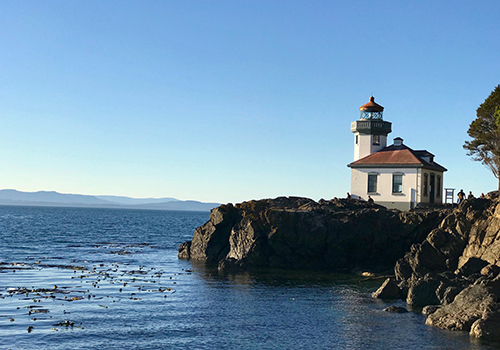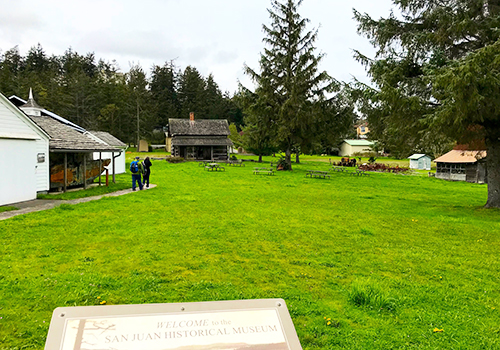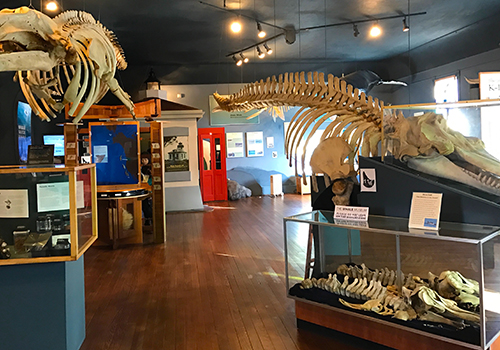
5 Fun Ways to Explore History on San Juan Island
Updated April 2021
There is a lot of history to explore on gorgeous San Juan Island! In addition to a deeply-rooted Native American history, the isle has a most fascinating natural history and of course is best known for the Pig War of 1859 and its ensuing 12-year peaceful occupation by British and American forces. And the best part, history on San Juan Island is not explored in dark, dusty museums with long, boring descriptions of what went down. No. History on San Juan Island lives on the prairie and on the beach and is experienced in song and stories, by participating, listening, feeling and touching. Understanding the past has never been so much fun.

1. History While Watching Whales
Lime Kiln State Park, also known as the Whale Watch Park, is one of the best places to observe Orca whales from land in the world. The 102-year-old light house doubles as an interpretive center for the Resident Orcas’ history and habitat and is open for tours during the Summer months.
The park gets its name and bright white cliffs from its former site as a lime kiln operation. Learn all about that history by visiting the re-built lime kiln in the north end of the park.
2. History on the Prairie
For 12 years in the late 19th century, British and American troops peacefully occupied San Juan Island on opposite sides of the island. Located on the south end of the isle, American Camp National Historic Park is wide open, rugged and beautifully windswept. Here, remaining barracks and an interpretive center shine light on the bygone days of the occupation.
The prairie behind South Beach, San Juan Island’s longest beach, was home to seasonal, Native American hunting and gathering camps 6,000 to 8,000 years ago.The locals of yore took advantage of the salmon bank, a submerged ridge off the beach, which was once considered the best fishing grounds in Puget Sound. These days, you may still happen upon arrow heads and ancient pottery shards.
American Camp is also home to over 200 migratory birds, bunnies, foxes, otters, eagles, sea lions, seals and whales and the best hikes on the isle. Spend time here, you won’t regret it, we promise.
3. History by the Bay
English Camp National Historic Park on the north side of the island, on serene Garrison Bay, is wooded and hilly with exhilarating hikes, ancient Garry Oaks and is colorfully carpeted with wildflowers in the Spring. You can tour the formal English garden, former barracks and cemetery to learn about life as a Royal Marine. And don’t miss the re-enactment of military and civilian life during that period every Saturday from June through August.

4. History in the heart of Friday Harbor
Just a few blocks from the Earthbox Inn & Spa, on the grounds of the former 445-acres James King Farm, you will find the San Juan Historical Museum. Besides the museum proper, there are eight historic buildings and cool artifacts on display depicting pioneer life on the isle. The beautiful museum grounds are lovely for a picnic in the sun and also serve as the locale of the free Music on the Lawn concert series on Summer Wednesdays as well as an old-fashioned Christmas celebration in December.

5. Friday Harbor Whale Museum
Okay this is a museum in the classical sense, in a building and all, open year-round and it is just so much fun to visit. The Friday Harbor Whale Museum celebrates its 42st birthday this year and is the only natural history museum dedicated to a species living in the wild. There is a real whale skeleton, tons of interactive displays, models, artifacts and a phone booth in which you can hear the whales sing. On display are a Family Tree of our Resident Orca, a Current-Sightings map and an exhibit on the dangers of plastic for the marine environment.
